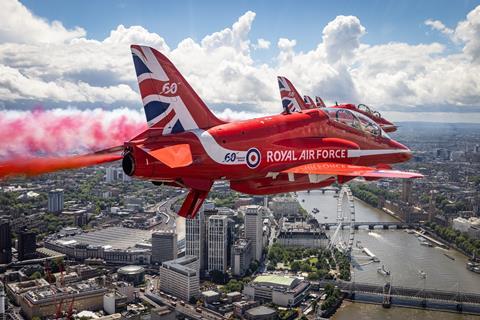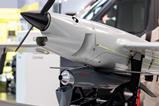Developed by the UK’s Hawker Siddeley, the sleek Hawk jet trainer took to the air for the first time exactly half a century ago, with the debut performed from the airframer’s Dunsfold site in Surrey.
Company chief test pilot Duncan Simpson was at the controls as the two-seat design completed its 53min inaugural sortie. This included taking the single-engined aircraft to a maximum of 20,000ft and up to 310kt (573km/h), and performing stall approaches using mid- and full-flap settings.
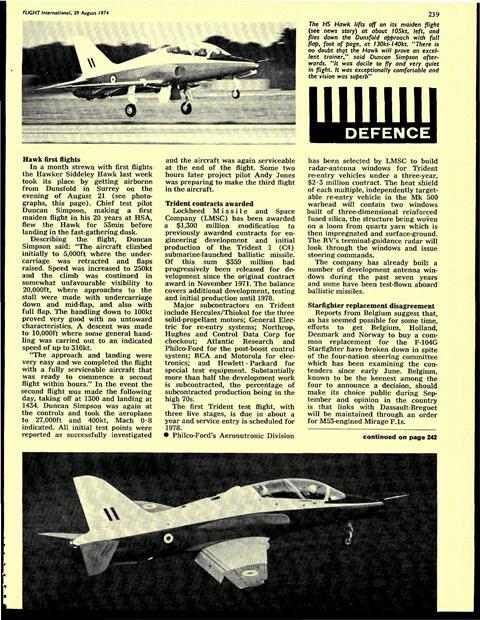
Covering the milestone in our 29 August 1974 issue, Flight International reported Simpson as saying: “The approach and landing were very easy and we completed the flight with a fully serviceable aircraft.”
He again put the aircraft through its paces the following day, expanding its flight envelope to 27,000ft and 400kt, before project pilot Andy Jones also flew the type for the first time on 22 August.
“There is no doubt that the Hawk will prove an excellent trainer,” was Simpson’s verdict. “It was docile to fly and very quiet in flight. It was exceptionally comfortable and the vision was superb.”
Production of the Hawk began for the UK Royal Air Force (RAF) under an order for 175 T1-model trainers, and operations commenced in November 1976, with the new model replacing the service’s Folland Gnat design.
In all, just over 1,000 of the type would be produced in a wide variety of standards, including the T-45 Goshawk, which was built by Boeing to meet US Navy (USN) training requirements, including landing on aircraft carrier decks.

A single-seat, light-attack version of the type was also developed, branded the Hawk 200. The subject of only limited production, this model remains in use with a trio of customer nations: Indonesia (21), Malaysia (12) and Oman (10), Cirium fleets data shows.
The Hawk’s 50th anniversary was one of the themes at this year’s Royal International Air Tattoo (RIAT), which featured a commemorative flypast involving examples from the air forces of Finland, Qatar, Saudi Arabia and the UK.
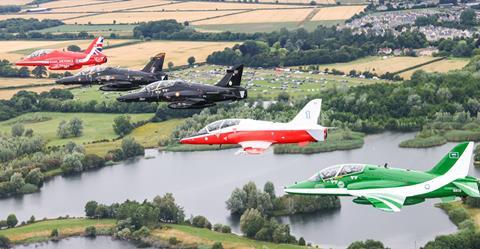
The UK’s last advanced jet trainer-roled Hawk T1s left service in March 2022, but the RAF’s Red Arrows aerobatic display team continues to fly the version. A 28-strong fleet of younger T2-model trainers also is operated from its Valley base on Anglesey, north Wales.
The Hawk is no longer in production, with the final examples – built for Qatar and the Royal Saudi Air Force – having been delivered by BAE Systems earlier this decade.
Cirium data shows that there are still 433 Hawks in operational military service in 13 nations, along with 189 T-45s flown by the USN.
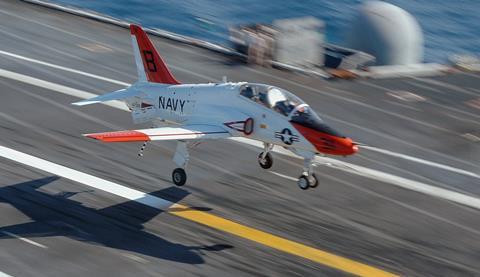
The leading three Hawk users are India, with 119 (102 air force and 17 navy); Saudi Arabia (81); and the UK (44). Other nations using the type are Australia, Bahrain, Kuwait, South Africa and the United Arab Emirates.
Additionally, civilian company RAVN Aerospace employs 10 N-registered Hawks for adversary and pilot training services, having acquired surplus jets retired by the Republic of Korea Air Force. Canada, Kenya, Switzerland and Zimbabwe were also former users of the type.
